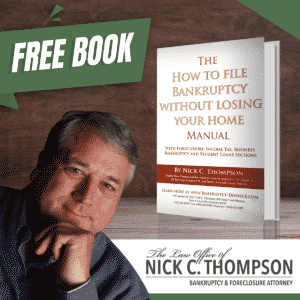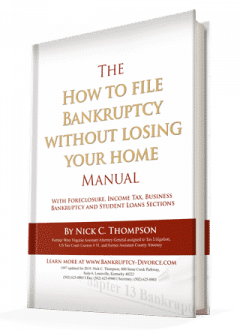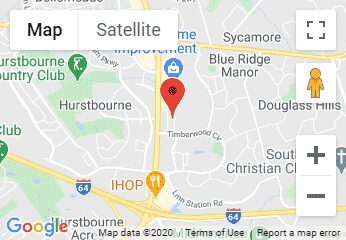Some student loans automatically discharge if you list them correctly and file them properly. Not waiting for the proper length of time to discharge them is probably malpractice. In addition, not waiting for the proper length of time to discharge income taxes can also be fatal. This is the quick four-part checklist we use to manage student loans or hardship discharge student loans in bankruptcy. Even if you can’t automatically discharge a student loan the law allows for a hardship discharge of student loans if you meet the standards.
Even some attorneys and doctors obtain total or partial discharges of student loans. Three empirical studies have shown about 50% of the people that try to get a discharge to obtain partial or complete discharges. Our website and Bankruptcy Manual discuss how to manage student loans with IBR, Chapter 13. You will also learn how to get the bankruptcy hardship discharge for student loans. Please like, or link to this site, our manual, and checklists so it can help others. The only way you found this information is because someone else liked us and linked to us.
Obtaining the Hardship Discharge for Private Student Loans
Student loans can be discharged if you prove repayment is a hardship to you or your family. It is very difficult to get a hardship discharge of student loans. You must file an adversary proceeding to get it. The majority of federal student loan borrowers can never meet the hardship standard. This also requires you to exhaust all your other options first and use the three-factor Brunner Bankruptcy test. Because there is a lack of option for private loans getting the discharge for private loans is much easier.
1. How to prepare for the Brunner test.
- You must prove you cannot support, based on current income and expenses, a ‘minimal’ standard of living for yourself and your dependents if forced to repay the loans.
- Other circumstances exist indicating this state of financial affairs is likely to persist for a significant part of the repayment period of the student loans.
- You have made good faith efforts to repay the loans. This means you have tried to make the payments and you have attempted the Income-Based Repayment (IBR) loan program. The IBR program makes your loan payments based on your ability to repay. If there is no ability to repay attempting an IBR may be futile and therefore, not a requirement.
Only after you are certain that you comply with these three factors can you attempt a discharge of student loans.
2. Obtaining the hardship discharge for government student loans.
If you have government loans then, the Income-Based Repayment (IBR) loan program is probably the best method to manage your student loans. Payments are graduated on a scale from $0 per month upwards to never over 10 % of your income. At the end of 20 years the loan is forgiven (discharged). National Student Loan Data System allows you to check if the loan is government or private. The bankruptcy judge normally requires you to attempt an IBR loan before he will consider a hardship discharge government student loan. One of the requirements is to exhaust all of your other options first.
The department of education has strong abilities to collect including the interception of government benefits, wage garnishments, tax refund interceptions, and DOJ lawsuits. Private lenders must sue to enforce collections and few of the private lenders are willing to sue to collect. Simply moving to other states may defeat private student loans from being able to collect. Many states have 3-5 year statutes of limitations. Others like North Carolina do not allow meaningful garnishments. Kentucky has a 15-year statute of limitations and any payment starts the period over again.
3. Government loan options vs. private options.
There are many programs with the Department of Education that allow the loan to be discharged and forgiven. This includes public service, disability, death, closed school, and other administrative discharge programs. There are few or no such programs for private lenders. Government loans are at low-interest rates and are not in default until they are 9 months past due.
Private lenders have higher interest rates and are often co-signed. Private loans often charge adjustable rates and are in default 30 days or less after the payment was due. There are few or no defenses to DOE loans. There is no statute of limitations or age of majority defense to government student loans.
Essentially the statute of limitations and all of the defenses you would use against a credit card apply to private student loans. Before 2005 private student loans were just as dischargeable as any other unsecured debt. If you filed a bankruptcy case prior to October 17, 2005, and the loan program was issued, insured, and administered as a for-profit, private (non-government) entity, the loan/debt may have been discharged.
Only government loans can consolidate into an IBR. However, you can rehabilitate government loans and then get the removal of default credit reporting by making 9 of 10 on-time payments. Building your credit score with this process might allow you to purchase a home.
4. Using Chapter 13 against private loans and for government loans.
You often qualify for a hardship discharge if you cannot get a loan into an IBR. Being at the poverty income level of income helps but does not disqualify you for a hardship discharge. You may want to pay a government student loan inside Chapter 13 while paying a private loan outside the plan. Section 1325 allows you to pay student loans in or outside a plan as long-term and business debt.
Courts have the authority to issue a partial discharge of the student loan when a debtor has some ability to repay but all of the three elements still must be shown. For real information see our Checklist to help you manage or discharge your student loans, PowerPoint presentation, read our manual, and here is a link to the resources page.
We appreciate any links or if you like us on Facebook and Google plus. By linking to us and connecting to our website and reviews on Google plus you help make this material available for others. The only way you found this information is because someone else liked us and linked to us. If you are in Kentucky or Southern Indiana come see us for your bankruptcy.
 Resources for Student Loans
Resources for Student Loans
Bankrupt or Discharge Student Loans • Video
Student Loan Collection Defense Lawyer • Video
Discharge Private Student Loans in Bankruptcy
Chapter 7 Student Loan Hardship Discharge
How to Manage Student Loans Collections
Do you need help managing your student loan? Contact my office right away to start the conversation. Nick C. Thompson, Attorney: 502-625-0905








